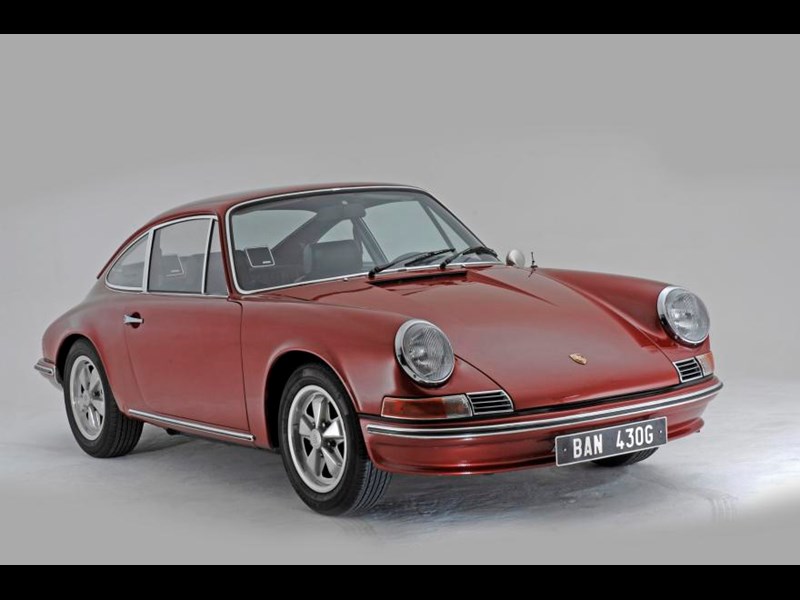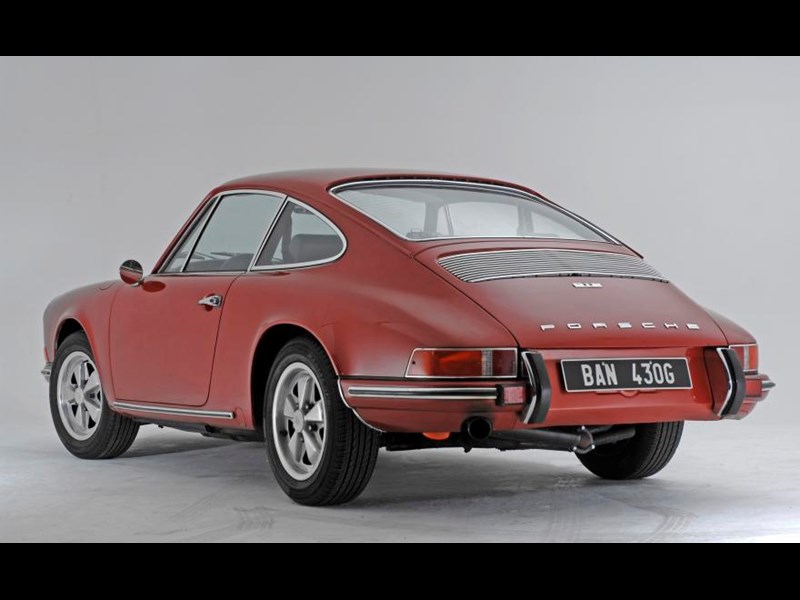Porsche’s move upmarket when the 911 arrived in 1964 prompted concerns that Stuttgart had abandoned the more affordable end of the sports car market previously occupied by the 356C.
The manufacturer’s answer was to mate the earlier car’s 1.6-litre flat four with the Butzi Porsche-penned shell of its successor to create the 912. At £2,467, it was around £1000 cheaper than its six-cylinder sibling, and was praised in period for its handling and quality. While it was a hit in the US, its performance and price – it cost more than an E-type, and two-and-a-half times more than a Triumph TR4 or a Lotus Cortina – meant its success in Europe was limited.
Porsche dropped the 912 from its range in 1969 after 31,000 were sold, but in 1976 the name briefly reappeared in the US only in 1976 as the 912E. Only 2092 versions of this model – which mated the ‘impact bumper’ 911 body with the 914’s engine – is now one of the most sought-after 911 derivatives of all.
VITAL STATISTICS
ENGINE 1582cc/4-cyl/OHV
POWER 90bhp@5800rpm
TORQUE 90lb ft@3500rpm
MAXIMUM SPEED 115mph
0-60MPH 13.5sec
ECONOMY 25-30mpg
TRANSMISSION RWD, four-speed manual
WHAT TO LOOK FOR
1. When starting a 912 from cold make sure the lights for the generator and oil pressure go out immediately. The 356-derived four pot can take big mileages if it’s well looked after, but it’s prone to leaking oil around the oil cooler and rocker areas. A ‘sewing machine’-esque engine note is normal, but any excessive rattling or knocking could indicate worn bearings or camshaft issues looming.
2. Check the fuel lines carefully to see if they’ve been replaced, as original items – which in the earliest cars will be more than half a century old – will be perishing and prone to leaking. Leaving an original set of fuel lines unchecked is inviting an engine fire – it’s located almost directly above the engine fan, which will spray and leaking fluids right around the engine bay.
3. Inspect the VIN plate carefully, which is stamped into the bodyshell just behind the fuel tank in the front compartment. Unlike the riveted chassis plate – which can be found attached to the bonnet catch panel on the earlier models and on the right side front inner wing on the 912E – it’s difficult to tamper with and any signs of it being altered should prompt questions about the car’s identity.
4. A lot of cars have been imported from the US. It’s not necessarily a bad thing, as the climate in the dry states generally means these cars suffer less from tin worm, but check carefully for proof of servicing because there have been instances of US-market cars not being the same amount of TLC as cars originally sold in the UK.
5. Common corrosion sports include underneath the headlights, where water and debris has been thrown up by the front wheels, the lower edges of the doors where stone chips attack the paintwork and blocked drains allow moisture to build up on the inside, and around the top and rear of the rear wings, where clutter thrown up the rear wheels builds up.
6. The 912 was sold as standard with the 356’s four-speed manual transmission, but plenty of buyers paid for the 911’s five-speeder as an optional extra – both are pretty robust units, but check for any signs of whining or grinding during changes on a test drive. The 912E’s five-speed box – referred to in Porsche parlance as the 923 transmission - is unique to the car, but don’t let that put you off, as it’s identical in all but a few minor details to the 915 transmission fitted in post-1976 911S.
VERDICT
Anyone who tells you the 912 is the 911’s poorer relation clearly hasn’t driven one – it’s lighter than six-cylinder sibling and makes up for its lack of outright oomph with sweeter handling.
What it shares with the 911, however, is its crisp styling and wonderfully communicative steering, and while prices have risen in line with the wider classic market over the past five years they’re still, as a rule of thumb, cheaper to buy than 911s from the same era.
It’s comfortable, more than capable of cruising at motorway speeds and hugely enjoyable through the corners – and it’s much less obvious than its 911 counterpart.


